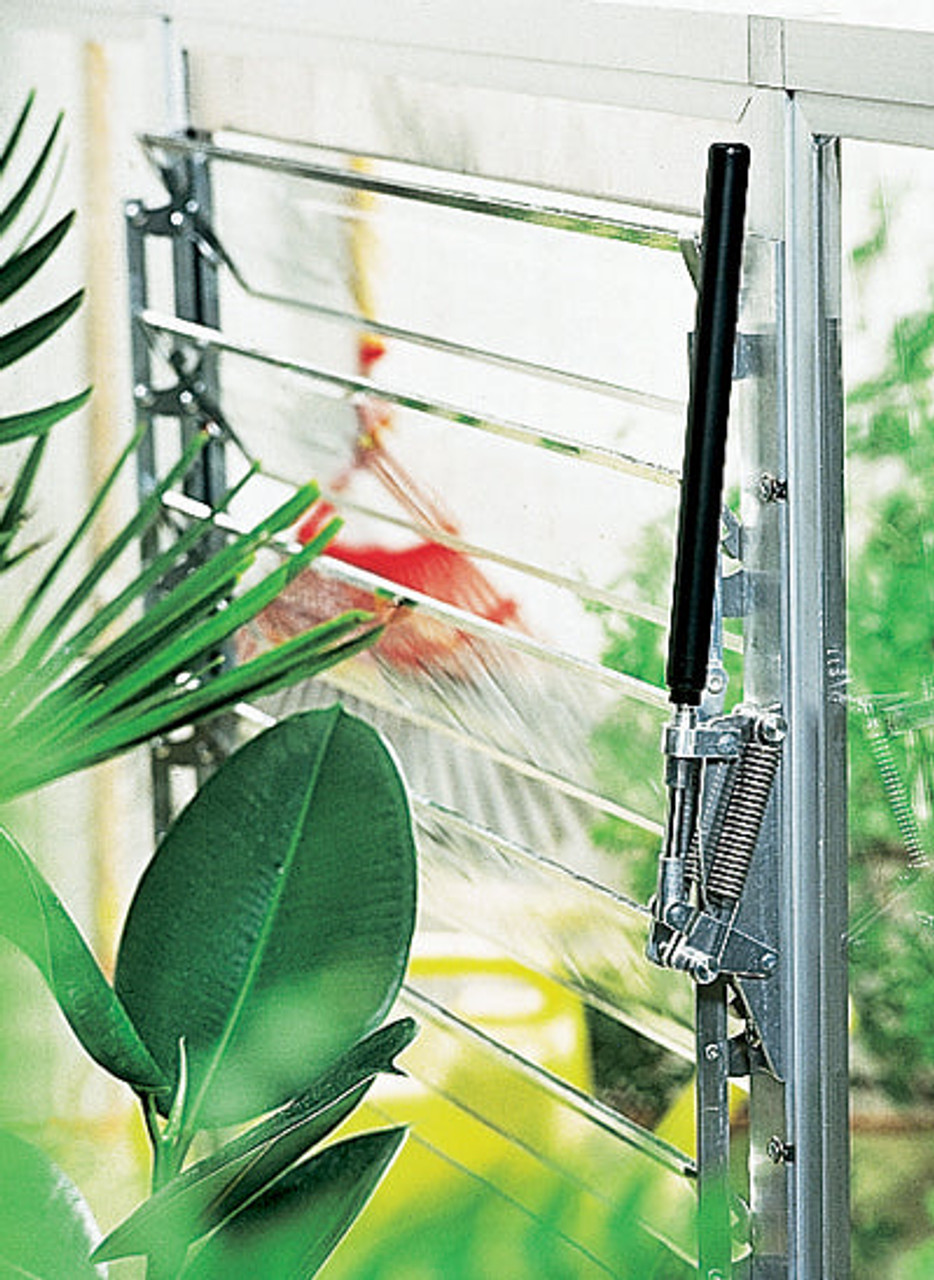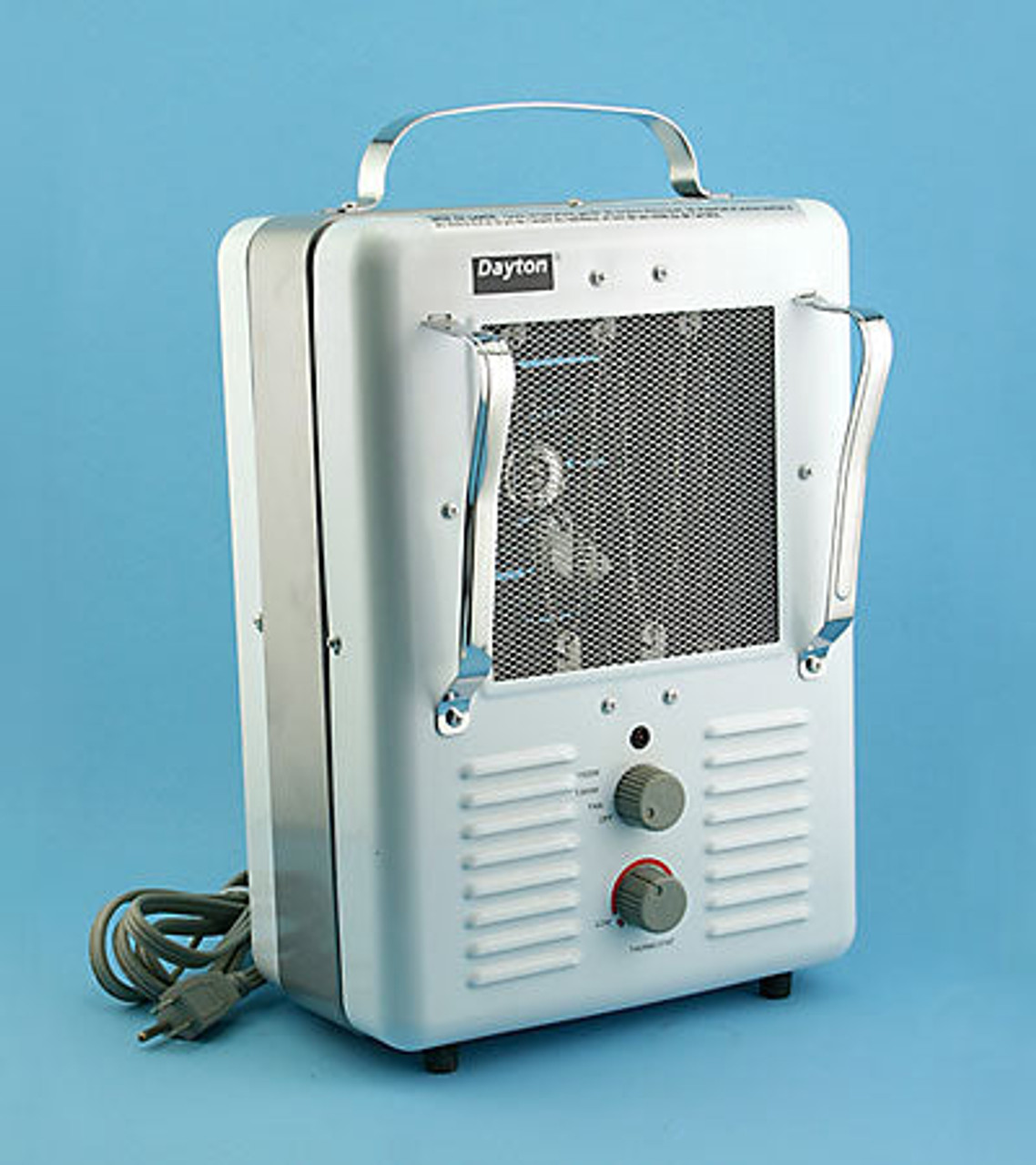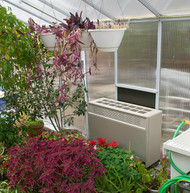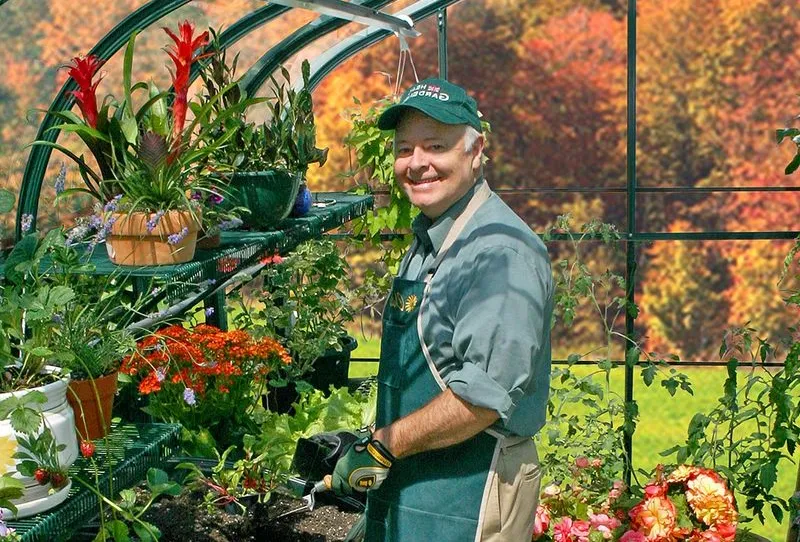Best Greenhouse Temperature Control Techniques to Help Your Plants Thrive All-Year Round
For the dedicated gardener, maintaining a thriving garden throughout the year is a commitment that requires attention to detail. An often underestimated but critical aspect of maintaining a productive greenhouse is managing the internal temperature.
While navigating the extremes of cold winters and hot summers, the success of your greenhouse hinges on maintaining the optimal climate. For experienced and novice gardeners alike, mastering the art of temperature regulation within your greenhouse is essential for cultivating a flourishing garden year-round.
Explore the best techniques to ensure your plants thrive in any season, and learn why mastering greenhouse tempefrature control is the key to gardening success.
Basics of Greenhouse Temperature Control
Understanding the role of temperature in plant growth is foundational for greenhouse gardening. Different plants have specific temperature requirements to thrive, and maintaining the right conditions is crucial for their health and productivity.
Effective temperature management in a greenhouse is crucial for these critical areas of plant growth:
- Seed germination: The correct temperature is critical for the germination of seeds. Each plant species has a specific range within which its seeds will sprout. For example, tomato seeds require temperatures between 70 and 80°F for optimal germination.
- Photosynthesis: Temperature affects photosynthesis, the process by which plants convert light into energy. Most plants need temperatures between 68 and 77°F to ensure efficient photosynthesis. However, some tropical plants prefer slightly higher temperatures.
- Root development: Soil temperature plays a major role in root development. Maintaining soil temperatures within the ideal range for a specific plant type is essential for healthy root growth and nutrient absorption.
- Flowering and fruit set: Temperature influences flowering and fruit set. For example, many fruit-bearing plants, like peppers and cucumbers, require warm daytime temperatures (around 75-85°F) and cooler nights to initiate flowering and fruit production.
Ideal Greenhouse Temperatures for Various Plants
To meet the temperature requirements of different plants, it’s essential to understand the ideal temperature ranges for various plant types. These temperature ranges are general guidelines for maintaining optimal conditions in your greenhouse.
| Plant Type | Ideal Temperature Range (°F) |
| Tropical Plants | 75-85°F |
| Cacti and Succulents | 60-70°F |
| Tomatoes and Peppers | 65-75°F |
| Orchids | 60-70°F |
| Herbs | 50-70°F |
| Citrus Trees | 55-70°F |
| Leafy Greens | 50-70°F |
| Roses | 50-75°F |
| Ferns | 60-75°F |
| Carnivorous Plants | 70-85°F |
Keep in mind that individual plant species within these categories may have slightly different temperature preferences, so research the specific requirements of the plants you’re growing to ensure a bumper yield.
Best Greenhouse Temperature Control Techniques
Greenhouses provide an ideal environment for cultivating various plants and crops, allowing gardeners to extend their growing seasons and achieve optimal growth conditions.
To maintain these conditions, effective temperature control is essential. Some of the best techniques for greenhouse temperature control include:
-
Manual Vents
Manual vents are adjustable openings, usually situated in the roof or side walls of a greenhouse. They allow for passive temperature management. By manipulating these vents to either open or shut, you can influence the internal temperature by controlling the airflow.
Manual vents are cost-effective and easy to operate, making them an excellent choice for hobbyists and small-scale growers. They are suitable for various gardens and crops, including vegetables, ornamental plants, and herbs. For optimal results, monitor the greenhouse with a thermometer and hygrometer and adjust the vents as needed to maintain your desired temperature range.
For those looking to automate their manual vent system, prewired economy vent systems offer a low-cost solution. These systems include an exhaust fan with a 9-ft. power cord, a prewired water-resistant thermostat, and an intake shutter. The automatic fan eliminates excessive heat on summer’s hottest days, and you can set the thermostat to your desired temperature.
-
Shades and Covers
Shades and covers are available in various materials and designs, from simple shade cloth to advanced retractable systems. These solutions work by limiting the amount of direct sunlight that enters the greenhouse. They’re beneficial in regions with hot summers or when growing heat-sensitive crops like lettuce, spinach, or certain flower varieties.
By controlling the sunlight and heat penetrating the greenhouse, you can create an ideal environment for your plants. These systems also help reduce the risk of sunburn and maintain consistent temperature and light conditions, leading to healthier and more vigorous growth.
The Lockknit shade fabric kit offers an economical solution for shading your greenhouse. This lightweight and easy-to-handle shade cloth reduces temperatures up to 15°F and blocks infrared sun rays. It’s reusable and can be cut to any shape or size, allowing for customization based on your greenhouse’s layout.
-
Opaque Coatings
Opaque coatings are applied to the greenhouse structure, such as the walls or roof, to reduce the penetration of sunlight. These coatings benefit large commercial greenhouses where precise temperature control is essential.
Opaque coatings are ideal for crops that prefer cooler conditions, like some varieties of orchids, ferns, and certain foliage plants. They prevent excessive solar radiation from entering the greenhouse, allowing growers to maintain a stable and cool environment.
Vari-Shade Concentrate is a greenhouse shading paint that screens out sunlight but becomes transparent when rainy, allowing more light through greenhouse walls and roofs. It can be thinned with water to provide the shading density desired, giving you flexibility in controlling the amount of light and heat that enters your greenhouse.
-
Automated Systems
Automated temperature control systems offer a high-tech solution for greenhouse temperature management. These systems use sensors to monitor the temperature and control various components, including vents, shades, heaters, and fans. They ensure the greenhouse’s environment remains within the specified temperature range without requiring constant manual intervention.
Automated systems are versatile and suitable for nearly all types of gardens and crops. They offer precise control, reducing the risk of temperature fluctuations and providing convenience, particularly for commercial growers with large operations.

The Liberty Automatic Louver Opener is solar-operated to automatically open and close a louver window as temperatures change, enhancing airflow through the greenhouse as needed. It can be adjusted to automatically open louvers at temperatures ranging from 60°F to 77°F, ensuring your greenhouse maintains the ideal temperature without manual adjustments.
-
Evaporative Cooling
Evaporative cooling systems work by introducing moisture into the greenhouse air. As the water evaporates, it cools the environment. These systems are an excellent choice for greenhouses in tropical climates or when growing temperature-sensitive crops like tomatoes and peppers.
They help prevent heat stress in plants, maintain optimal conditions, and improve yields. Evaporative cooling is easy to install and maintain, making it accessible to small-scale and large-scale growers. Some standard methods include pad and fan systems, fogging systems, and wet wall systems.
For effective and efficient evaporative cooling, the Evaporative Cooler with 2800 CFM (cubic feet per minute) capacity is an excellent choice. This system provides natural cooling by pushing outside air through a wet cooling pad, cooling incoming air by 15°F to 30°F. It also adds humidity to the greenhouse and filters the air of dust and insects, creating a comfortable and healthy environment for your plants.
-
Built-In Heating Solutions
Built-in heating solutions, like radiant heating systems, are vital for maintaining the greenhouse’s temperature during colder months. They disperse heat evenly, preventing cold spots that can harm plants. Radiant heating is suitable for year-round cultivation and a broad range of crops, including tropical and subtropical varieties.
These systems are often more energy-efficient and less intrusive than traditional forced-air heating, making them an excellent choice for larger and commercial greenhouses. They ensure plants remain healthy and productive, even in chilly or freezing weather.
For efficient heating, the Direct Vent Empire gas heater is a wall-mounted design that offers easy, low-cost installation with no chimney required. It draws outside air for combustion and vents exhaust gasses directly outside. This heater operates without electricity, making it suitable even during power outages.
-
Portable Heating Solutions
Portable heating solutions, such as electric space heaters or propane heaters, offer a flexible way to add extra warmth when necessary. They are particularly valuable for small greenhouses or in regions with mild winters. Portable heaters can be moved to where they are needed most, making them suitable for plants of different sizes.
They protect your plants from frost and cold snaps, extending the growing season. However, be cautious when using portable heaters, as they require manual operation and can pose fire risks if not used properly.
The Dayton 120-Volt portable heater offers 1,500/1,300 watts of heat with an automatic thermostat, safety features like a tip-over disconnect switch, overheating shut off, and a Power On light. It comes with a grounded, 6-ft, 3-prong power cord, providing a convenient and reliable heating solution for your greenhouse.

Additional Factors That Impact Greenhouse Temperature
Maintaining an ideal greenhouse temperature isn’t just about the techniques and equipment used. Several other critical factors can also influence the overall climate of your greenhouse.
-
Humidity Levels within the Greenhouse
Ensuring that the moisture content in the air is just right can help you manage the internal climate more effectively. Too much humidity can encourage mold and mildew, while too little can lead to wilting and stressed plants.
To manage humidity, try Charley’s Humidity System with Humidistat. This electrical system allows you to maintain the perfect humidity levels, creating a comfortable and healthy environment for your plants.
-
The Importance of Proper Insulation
Proper insulation is crucial for effective greenhouse temperature control. Without it, temperature fluctuations can become more challenging to manage. To optimize insulation in your greenhouse, try Reflectix Insulation.
This reflective insulation solution not only aids in temperature regulation but also contributes to energy conservation, reducing heating and cooling costs. It creates a more stable environment for your plants, ensuring they thrive under controlled conditions.
-
Impact of Outside Weather Conditions
External weather conditions have a direct impact on the internal climate of your greenhouse. The ELV Outdoor Sensor provides real-time data on outdoor conditions, enabling you to make timely adjustments to your greenhouse’s climate control systems.
It’s an essential tool for staying one step ahead of weather-related challenges and ensuring your plants thrive, regardless of what’s happening outside.
Strategies to Regulate Greenhouse Temperature Year-Long
With the changing seasons come varying challenges in keeping your greenhouse’s environment ideal for your plants. Greenhouse gardening is a year-round endeavor, and by understanding how to manage temperature effectively, you can ensure your plants thrive no matter what Mother Nature throws your way.
-
Winter Greenhouse Management
The winter months can be a difficult time for greenhouse gardening, as plummeting temperatures can harm your plants. To safeguard your plants and maintain a cozy greenhouse environment, consider the following winter management strategies:
- Insulation is key: Begin by checking your greenhouse’s insulation. Ensure that windows are double-glazed or install insulating curtains. These measures help retain precious heat during the chilly months, safeguarding your plants from frosty conditions.
- Heating solutions: When the cold sets in, supplemental heating is often necessary. Built-in heating solutions, like radiant heaters, can keep your plants snug and thriving. These systems emit heat directly to your plants, ensuring they stay warm and healthy.
- Draft prevention: Regularly inspect your greenhouse for drafts and seal any gaps. Preventing cold air from entering is vital, as drafts can lead to temperature fluctuations that can harm your plants.
- Weather monitoring: Keep an eye on the weather forecast. Be prepared to increase heating when necessary, especially during severe cold spells. Winter greenhouse management requires proactive measures to safeguard your cherished garden.
-
Summer Greenhouse Management
Summer can bring intense heat, making it difficult to maintain a comfortable climate for your plants. To maintain an optimal greenhouse environment during this challenging season, implement the following strategies:
- Morning watering: Water your plants in the morning to reduce heat stress. This ensures your plants have ample moisture before the day’s peak heat, increasing their resilience.
- Sufficient shading: Besides shade cloth, consider using roll-up sidewalls or shade paint on the exterior of the greenhouse. These methods block out excess sunlight and reduce the greenhouse's interior temperature effectively.
- Misting systems: Install misting systems that can release fine water droplets into the air, creating a cooling effect. These systems also increase humidity levels, which can be especially beneficial in arid regions.
- Thermal curtains: Use thermal curtains, which act as insulators. These curtains can be drawn at night to retain heat and opened during the day to release excess warmth.
-
Spring and Fall Greenhouse Adjustments
During the transitional seasons of spring and fall, the greenhouse climate can be as unpredictable as the weather. To ensure your plants remain healthy and thriving during these changing times, consider the following strategies:
- Seasonal plant selection: Consider rotating your plant selection based on the season. Plant cold-tolerant crops in the spring and fall, reserving the summer for heat-loving plants. This can reduce the need for extreme temperature control measures.
- Thermal mass: Use thermal mass materials like water barrels or bricks inside the greenhouse. These materials can absorb excess heat during the day and release it slowly during the cooler nights, helping stabilize temperature fluctuations.
- Double-layered glazing: If you have a larger budget, invest in double-layered or twin-wall polycarbonate glazing for your greenhouse. This provides better insulation and helps to keep temperatures more consistent, especially during the shoulder seasons.
- Natural pest control: Spring and fall can be difficult in terms of pests and diseases. Consider introducing natural predators like ladybugs or releasing beneficial nematodes to keep these issues in check.
Encourage Plant Growth and Health with Effective Temperature Control
Effective greenhouse temperature control is the key to nurturing plant growth and ensuring their health year-round. At Charley’s Greenhouse & Garden, we understand the importance of greenhouse temperature control.
Ready to create the perfect environment for your plants? Explore our range of high-quality products and solutions for greenhouse temperature control. Take the first step toward a thriving garden by contacting us today.


